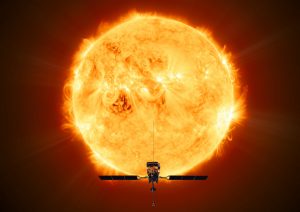Solar Orbiter Mission | 11 Feb 2020
Why in News
NASA has launched the Solar Orbiter to space on an Atlas 5 rocket from Florida on February 10.
- The mission is a cooperative mission between NASA and the European Space Agency (ESA) which will help researchers to know how the star's energy affects Earth and humans in space.
Key Points
- The Solar Orbiter Mission is a cooperative mission between NASA and the European Space Agency (ESA).
- It a seven-year mission.
- Significance:
- It will observe the Sun with high spatial resolution telescopes and capture observations in the environment directly surrounding the spacecraft to know how the Sun can affect the space environment throughout the solar system.
- It also intends to give a better understanding of how stars can affect the space environment throughout the solar system.
- The spacecraft also will be the first to provide images of the Sun’s poles.
- The mapping of Sun’s pole could allow for the first time to observe the concentrated source of solar wind that permeates our solar system.
- The solar wind is the mixture of charged particles that are highly concentrated at the poles and beam through our solar system, affecting satellites and electronic devices on Earth.
- The mission will also study the magnetic environment around the Sun, which in turn will provide information about the Sun’s 11-year solar cycle and its periodic outpouring of solar storms.
- Solar Orbiter carries ten instruments, three of which will help to survey how Sun’s surface changes over time.
